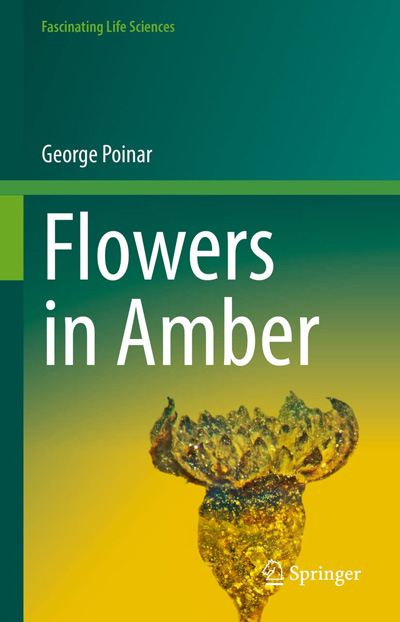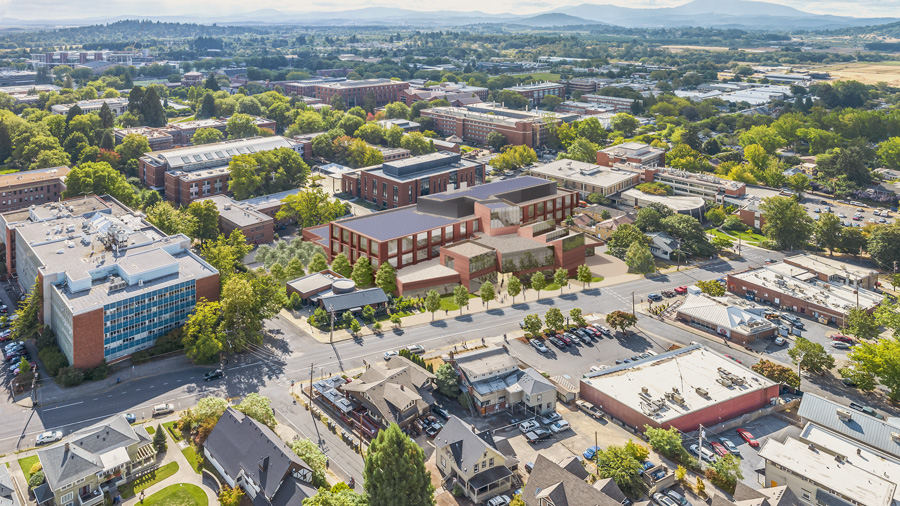Big Discoveries That Drive Big Solutions
Research is a catalyst for widely shared prosperity
Research, innovation, scholarship and creative activities at Oregon State University have built our global reputation and achieved remarkable results. Working through transdisciplinary teams across the sciences, engineering, arts, social sciences and humanities, Oregon State researchers continue to make significant discoveries and apply pragmatic, scalable problem-solving to the problems the world needs solved.
During the 2023 fiscal year, awards and research revenue totaled a record $480 million. This includes $426.7 million in federal funding, a 45% increase from 2022. Oregon State’s overall research expenditures also increased 23% to a record $367 million. Research expenditures, a key metric to measure research productivity, have increased for 19 out of the past 21 years at Oregon State.
We continue to build on this success as the university launches its 2024-30 strategic plan, Prosperity Widely Shared: The Oregon State Plan. Its goals are interdependent, with research integrated into all three. Building on our longstanding and emerging institutional strengths, Oregon State will be:
As Oregon State University launches this ambitious and visionary strategic plan, the Division of Research and Innovation looks forward to supporting faculty researchers and students in achieving the goal to create equitable, sustainable prosperity across Oregon and beyond.
Irem Y. Tumer | Vice President for Research and Innovation
Confirming Einstein’s theory of relativity
Finding a “chorus” of low-frequency gravitational waves, a team of astrophysicists has confirmed one of the main predictions of Albert Einstein’s theory of relativity. The discovery of these waves, after studying signals from 68 pulsars in the Milky Way, is a key to understanding how structures are formed in the cosmos.
Bringing the heat to fight cancer
Magnetic nanoparticles have shown anti-cancer potential for years. Now, Oregon State researchers have developed an advanced thermal decomposition method to make these particles hotter than ever before, improving their ability to weaken or destroy cancer cells. This breakthrough could lead to novel nanoparticles with high heating performance for treating cancer.
Designing smarter, more capable underwater vehicles
With $5.3 million in funding from the Office of Naval Research, Oregon State researchers are working to improve the intelligence and functionality of autonomous underwater vehicles. UAVs have multiple applications in underwater construction, marine exploration, ship maintenance and support for wave energy systems.
Modernizing zebrafish lab to benefit human health
Research using zebrafish can be easily applied to humans because they have similar developmental and genomic processes. A $7.5 million grant from the National Institutes of Health will modernize Oregon State’s zebrafish lab, whose studies on human and environmental health have included the toxicity of sunscreens and the health impacts of 5G wireless networks.
Understanding the economics and geopolitics of fish migration
Climate change could lead fish stocks along the U.S. coast to migrate to Canadian or even Russian waters in 20 years. Through a $1.4 million grant from the U.S. Department of Defense, Oregon State researchers will explore how to measure the movement of fisheries and the potential economic and geopolitical consequences.
Developing climate-smart potatoes
Through a $50 million grant from the U.S. Department of Agriculture, Oregon State is collaborating with potato farmers and Native American Tribes to test rotation crops, reduced tillage seedings and other climate-resilient practices. Such techniques could enhance soil health and reduce the carbon footprint of the Pacific Northwest’s $2.2 billion potato industry.
Since 1988, Oregon State has awarded the designation Distinguished Professor to faculty nominated by their deans. Recognizing exceptional records in scholarship and creative work, teaching and mentoring, and public engagement and service, the title Distinguished Professor is the highest faculty honor granted by the university.
 Emily Ho | Nutrition
Emily Ho | Nutrition Yanyun Zhao | Food Science and Technology
Yanyun Zhao | Food Science and TechnologyNSF Top 5 Research News Story of 2023
Breakthrough in computer chip energy efficiency could cut data center electricity use
The Authors and Editors Series celebrates literary and scholarly books published by Oregon State faculty each year. Selected authors and editors are featured in a series of readings, lectures, discussions and receptions, hosted by the Office of the Provost in partnership with the OSU Center for the Humanities.
 Sindya Bhanoo | Seeking Fortune Elsewhere
Sindya Bhanoo | Seeking Fortune Elsewhere George O. Poinar | Flowers in Amber
George O. Poinar | Flowers in Amber Jennifer A. Reimer | Keşke
Jennifer A. Reimer | KeşkeAdvancing semiconductor technologies
Oregon State is leading a $1 million National Science Foundation project to advance semiconductor technologies in the Pacific Northwest. The project will complement the federal CHIPS and Science Act and related state legislation, with goals to accelerate domestic semiconductor production, drive transdisciplinary research, expand pathways to degrees and industry careers, and boost regional economies.
Warning of an unequivocal climate emergency
An international coalition of researchers has found that 16 of 35 vital signs that track climate change are at record extremes. Oregon State scientists, lead authors of the report, “World Scientists’ Warning of a Climate Emergency 2022,” share data on extreme heat, tree cover lost to fires and increasing fossil fuel consumption and advocate for science-based climate policy decisions.
Promoting microfluids and mass timber solutions
Oregon State is leading two federally designated Tech Hubs, one focused on microfluidic technology for semiconductors and the other focused on mass timber design and manufacturing. The Corvallis Mircofluids Tech Hub will establish global leadership in the development, scaling and commercialization of microfluids technology for use in semiconductor and electronics cooling. The Pacific Northwest Mass Timber Tech Hub will build on research, education and outreach by the TallWood Design Institute, a collaboration between Oregon State and the University of Oregon.
A better battery for storing renewable energy
Renewable power sources like wind and solar need large-scale battery arrays to store generated energy and supply the electric grid. Oregon State researchers have developed a new electrolyte for zinc metal batteries that increases their charging efficiency exponentially — making them a safe, efficient, economical and sustainable alternative to lithium-ion batteries.
Cultivating the next generation of agriculture professionals
The OSU Extension Service will use a five-year, $10 million grant from the U.S. Department of Agriculture to coordinate youth programs to support the next generation of food and agriculture professionals. Programming will integrate racial justice and equity, a climate change curriculum that emphasizes sustainable agriculture and forestry, future career opportunities and more.
Investigating climate change impacts on marine life
The National Oceanic and Atmospheric Administration awarded Oregon State and its partners $4.2 million to uncover the stressors and impacts of climate change on marine ecosystems along the coast of Oregon, Washington and Northern California. Researchers will focus on Dungeness crab and krill — two species that play a critical role in ocean health, coastal and Tribal economies and the ocean’s food web.
$480 Million
Total Research Awards (FY23)
>1,950
Proposals Submitted on Average per Year
73
Fulbright Fellows
>$2.8 Billion
Oregon State Research Awards (since FY15)
89%
Federal Funding Relative to All Research Awards (FY23)
79
NSF Career Awards (since 1999)
Agilent Technologies Inc. has acquired e-MSion, founded in 2015 by Oregon State scientists who developed the ExD cell. This innovative electron capture dissociation technology for mass spectrometry can help life science researchers more comprehensively characterize molecules of interest, accelerating the development of biopharma products to treat disease.
It takes Moxie to bring research to market
Oregon State’s Advantage Accelerator has launched Moxie, a customized innovation and entrepreneurship program designed for women innovators. Moxie, defined as a blend of determination, courage and persistence, includes three phases — Educate, Engage and Execute — where participants develop skills to take their research to market.
Agility to open factory for humanoid robots
Agility Robotics, creator of the groundbreaking bipedal robot Digit, is opening the world’s first large-scale factory for humanoid robots. Located in Salem, Oregon, the RoboFab will employ up to 500 workers with capacity to produce more than 10,000 robots annually. Digit is designed to work alongside people in logistics and warehouse applications, augmenting the productivity, efficiency and wellness of the human workforce.
Oregon State’s O.H. Hinsdale Wave Research Laboratory is the largest facility of its kind in North America. Through research, testing, education and outreach, the wave lab helps to improve the resilience and sustainability of coastal areas, as well as develop innovative design solutions for coastal infrastructure. Equipped with a large wave flume and directional wave basin, the lab allows researchers to study hydrodynamics, floating structures, renewable energy devices and the stability of coastal structures. Waves can mimic tsunamis, hurricanes and other storm conditions, helping researchers prepare for and mitigate their impacts.
Established in 1972, the wave lab is supported by the National Science Foundation and the Pacific Marine Energy Center.
“Bigger is better.The closer the simulation gets to actual size, the more reliable the results. Researchers may know exactly what structure they want to test, but they may not know a lot about what forces to apply or how to conduct the experiment. We help them with everything so that they leave with the data they need.”
Pedro Lomonaco | Director | O.H. Hinsdale Wave Research Laboratory


Building next-generation research capabilities
The Jen-Hsun and Lori Huang Collaborative Innovation Complex will incorporate multiple state-of-the-art capabilities to advance solutions in materials science, computation, artificial intelligence, engineering and robotics: one of the nation’s most powerful supercomputers, a cleanroom to develop next-generation semiconductors and an extended reality theater for interactive simulations focused on robot systems, human health and other fields.

Launching OSU’s new research vessel
The first of three Regional Class Research Vessels, the R/V Taani was successfully launched last May in Louisiana. Oregon State led design and construction for the ship, which will feature advanced technologies and systems to expand ocean-based research, enhance capabilities and improve safety. To be completed in 2024 and operated by OSU, Taani will be based in Newport on the Oregon Coast.